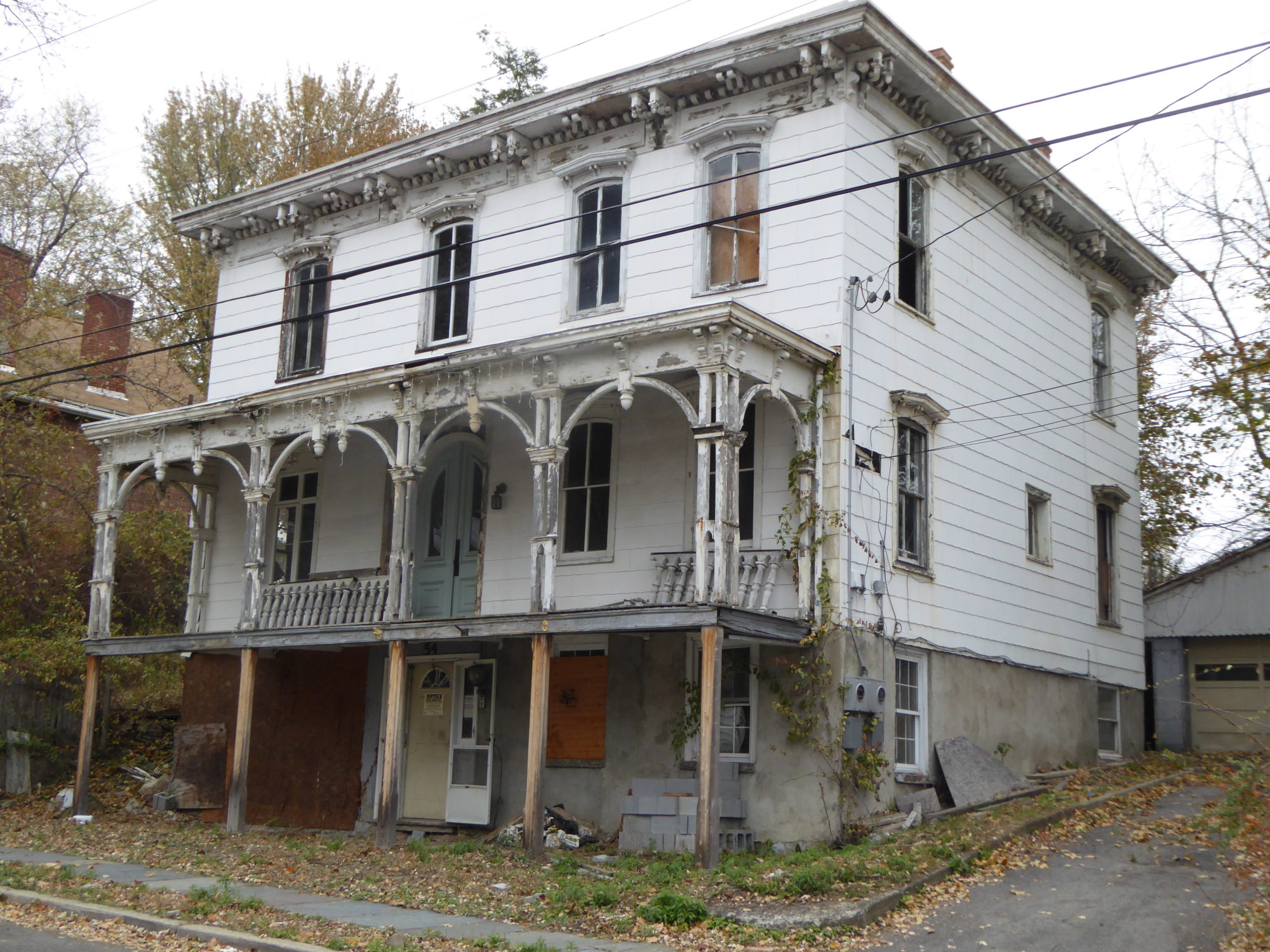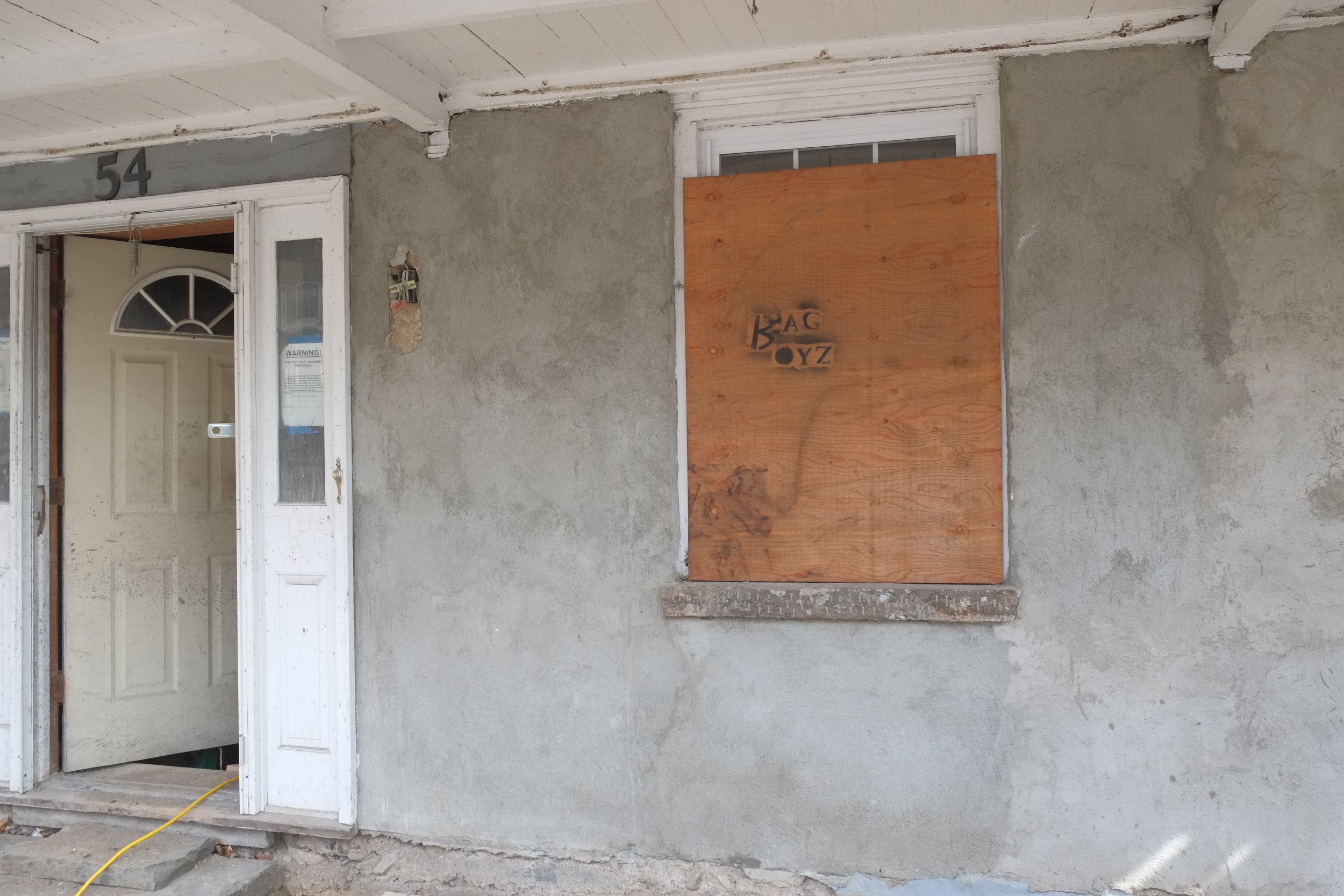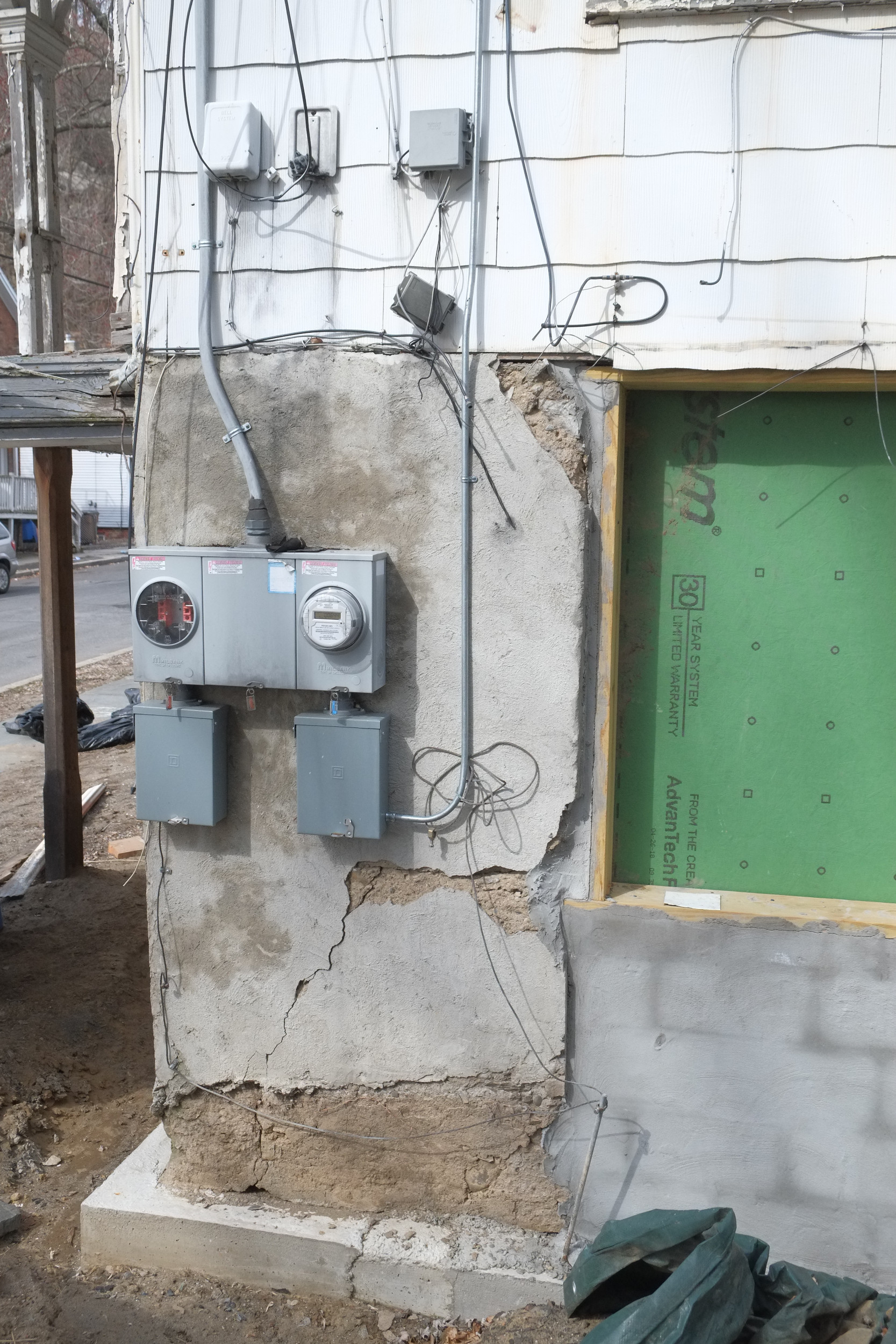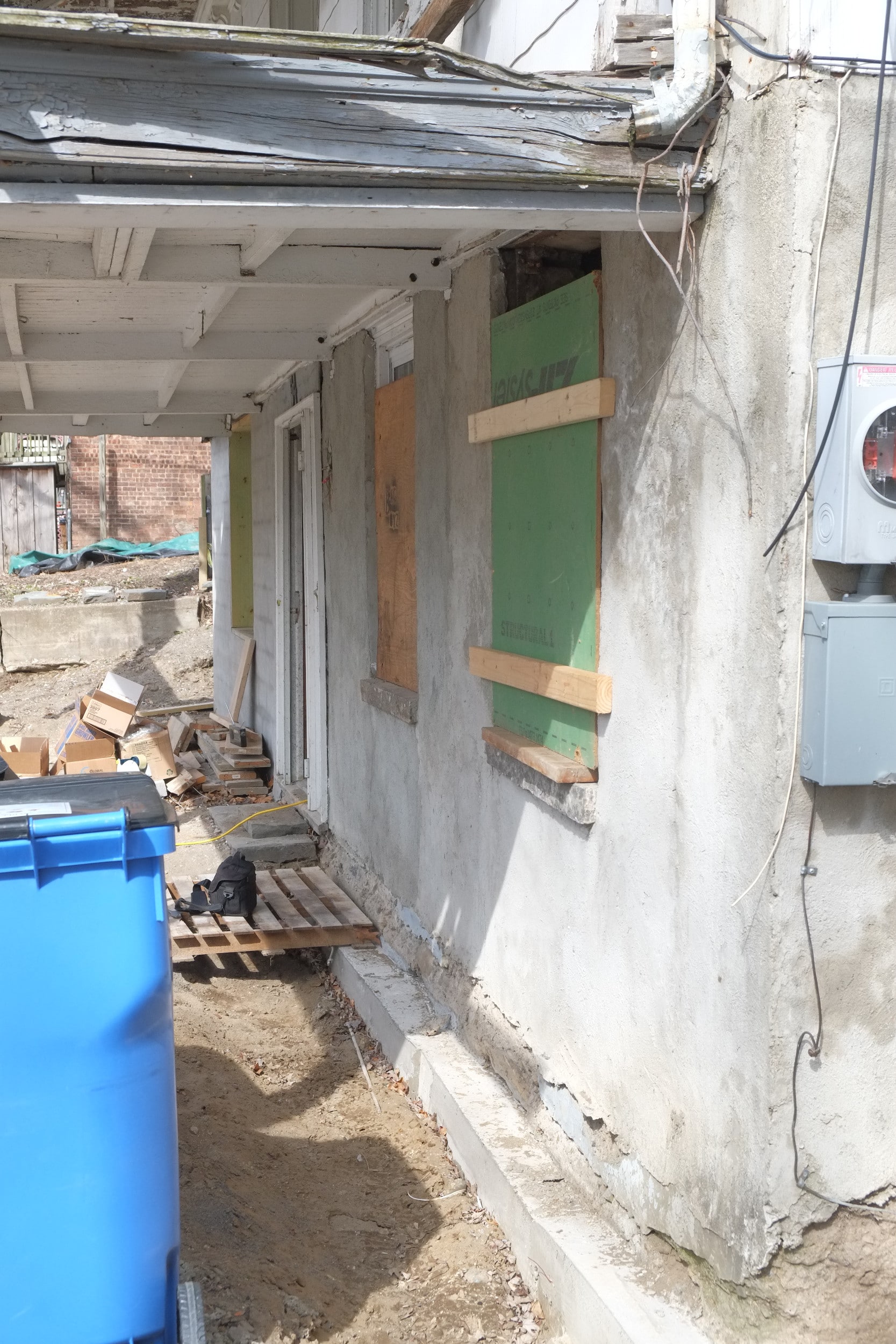Today we removed most of the parge coat from the house and in case you’re wondering why, it was because the existing (modern) parge coat was done with Portland cement over the existing lime mortar walls. This is not a good idea as pointed out in this article:
Lime is the base product widely used to produce mortars, plasters and limewashes for traditional buildings. Lime has distinct advantages over cement based alternatives for external rendering of traditional properties. Lime is less dense and more vapour permeable than cement based materials and does not trap water in the substrate which is the leading cause of decay in all buildings. Lime materials accommodate general movement better than harder cement based alternatives and are closer in strength to many of the types of stone and brick used in traditional construction and therefore do not exacerbate their deterioration.
Instead of using lime materials, many traditional buildings are repaired and renovated using harder, impermeable materials designed for modern buildings which use completely different construction methods. The result is often worsened damp problems. The simple advantage of using a lime render is that it allows the walls to diffuse any water vapour that penetrates into them, referred to as the free passage of moisture vapour.
which to summarize means that a Portland parge over a lime mortar wall will trap moisture in your house, cause your walls to deteriorate and will likely crack due to its inflexible nature. By the way that is snow in the video.
To remove the existing parge coat I used our recently purchased rotary hammer drill. What a great tool.
By the way, where the mains water pipe goes into the house (clad in blue foam insulation) there used to be a door and steps down to it. It probably got filled in when the garage and driveway were built.
In the process of preparing for french drains and new footings we’ve already cleared a trench around most of the house so this is an ideal time to do a fresh parge coat as well as to repoint all the corners etc. We’re hoping that our friend Derrick can do the work as he is an expert in old school plastering. Once the parge coat is on it’s recommended we wait for two weeks for the parge to partially cure before we apply a lime wash which is an old fashioned whitewash, the sort that you’d see on old farm buildings. Allowing another two weeks for curing we can start to install our french drains and fill the trench in. It will be nice to have our paths around the house back as currently you can’t walk around the house.
Concerning the the new parge coat I’ve been talking to Chris at LimeWorks and he suggested a 3.5 Natural Hydraulic Lime for the parge and a 5.0 Natural Hydraulic Lime for any small structural repairs. I can highly recommend Lime Works if you have lime mortar in your old house.
Aimee in the meantime has been double bagging asbestos tiles which were removed from a section of the house last year. This is the second load we’ve disposed of and it will be good to get rid of the stuff. We have to make an appointment at the dump before we take it in and were told that it ends up near Syracuse which is about 200 miles away.





